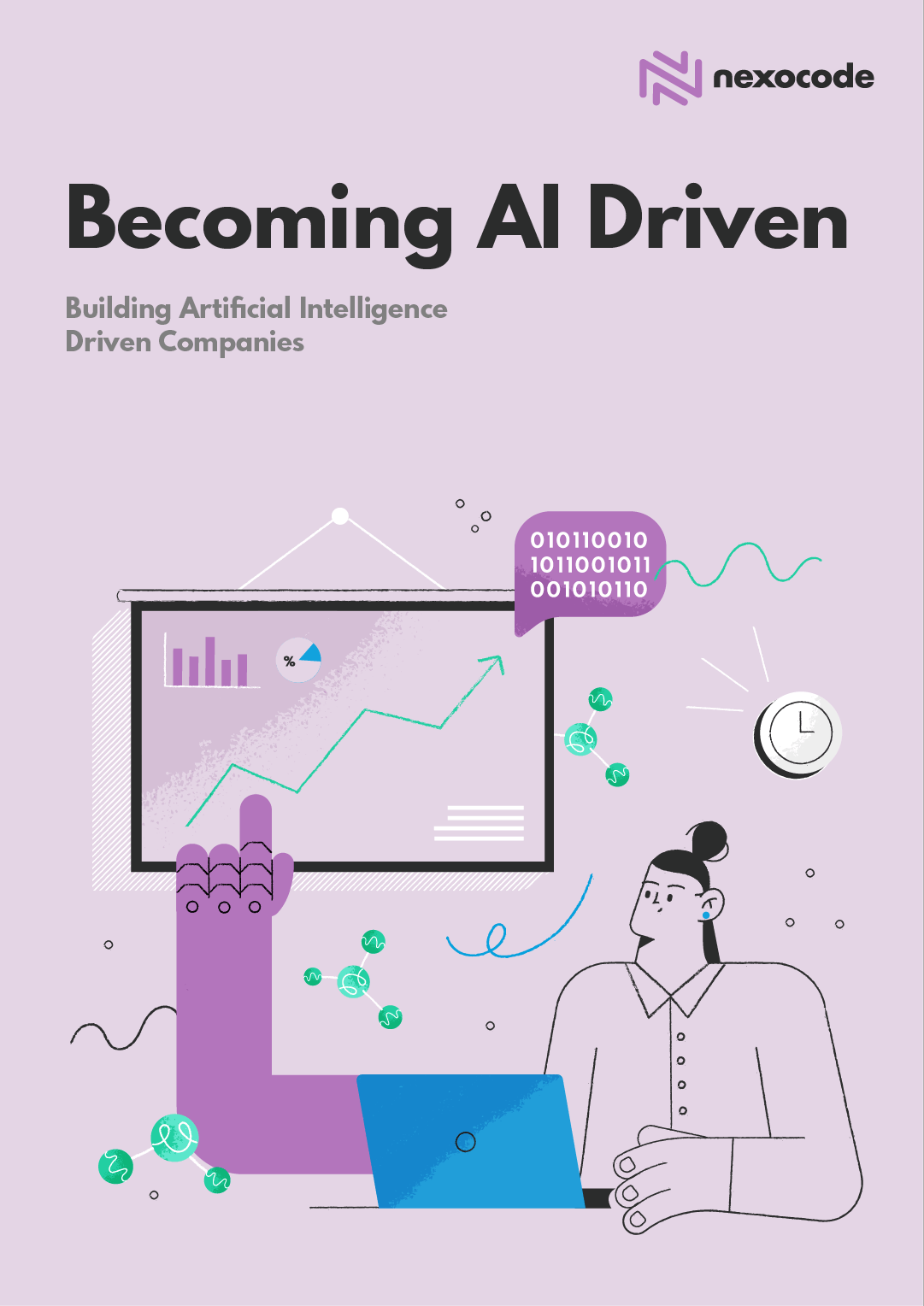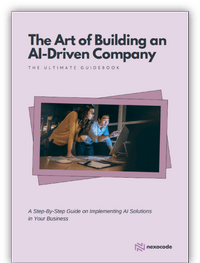In today’s data-driven world, businesses are sitting on a goldmine of valuable information. From customer behavior to market trends, data provides invaluable insights that can help organizations make informed decisions and stay ahead of the competition. However, treating data as an afterthought rather than an asset can lead to missed opportunities, bad decisions, and costly mistakes.
In this article, we’ll explore the importance of treating data as an asset and how doing so can help businesses unlock their full potential. We’ll delve into the four V’s of data, the role of a Chief Data Officer, the consequences of bad data, and the benefits of a good data pipeline. We will also try to identify valuable data assets within your company that you can leverage. So, whether you’re a small startup or a large corporation undergoing digital transformation, read on to discover how you can turn your data into a competitive advantage.
TL;DR
• Treating data as an asset is crucial for businesses to unlock their full potential.
• The 4 V’s of data (Volume, Velocity, Variety, and Value) need to be considered when looking at data haves.
• It’s essential to break down data silos and promote cross-functional collaboration to maximize the value of data and resources. Data democratization can be an alternative and modern approach to the old siloed structure.
• Having a Chief Data Officer, a dedicated data workstream, and a data governance strategy in place is essential to manage data. To become a data-driven organization, implement a comprehensive data strategy, invest in modern data infrastructure to store data and extract insights, prioritize data assets needed, establish a dedicated data workstream, and constantly monitor data quality.
•
Contacting data experts like nexocode can help build a data strategy, implement data engineering solutions at scale, and support organizations in making informed decisions and achieving long-term success.
Three or Four V’s of Data
According to Google, we produce about 1.145 trillion MB per day. We store it in data warehouses, spreadsheets, and text files. Nowadays, data comes with all tastes and flavors, from structured tabular data to pictures, videos, or audio files. At the beginning of the Big Data era, the 3 V’s were often mentioned Velocity, Variety, and Volume, forgetting a little bit about a fourth one - Value.
On many occasions, we produce data even without thinking about it. And this is a huge mistake that can lead to many problems in the future.
Many times data is a side product of a system designed solely to deliver a certain service e.g., an online store. All the data structure resembles business objectives created by a web designer, database architect, and software developer. The data and its structure need to support browsing items, check-out products, etc.
At the point of system or service creation, the analytical side of the data is often neglected. This is why when it comes to data analysis it can be so cumbersome and costly.
Data is the backbone of machine learning, as it provides the foundation for the algorithm to learn and make predictions. In a world where data is being generated and captured at an unprecedented pace, machine learning has emerged as a powerful tool for businesses to gain insights and
make data-driven decisions.
Chief Data Officer?
There is often no data strategy or even data optimization in place. To carry out the example of an online shop, we can end up with no product hierarchy, duplicates, obsolete or inaccurate descriptions, and many other problems.
One of the questions that arise is - should we even bother? Yes, we should. The data is the fuel to our success. Understanding user behavior and uncovering seasonality and hidden patterns will help us optimize the business and maximize profits.
Correct customer data and clean data pipelines allow data analysts to deliver high-quality reports, which can be a foundation for entire analytical and predictive systems leveraging all types of data sources and SOTA algorithms.
Another aspect of the data is accountability for its correctness. Twenty years ago, with an explosion of data warehouses, we started collecting more data in a structured way, but the concept of data ownership (data stewards), Chief Data Officer, and data governance is still somewhat fresh and not present in all companies.
Data Warehouse Era
The data warehouse era refers to the time period in the late 1990s and early 2000s when data warehousing became a popular approach to managing and storing large volumes of data. During this era, organizations began to realize the value of collecting and analyzing data to gain insights into their operations, customers, and market trends. As a result, they started investing in data warehousing technologies to manage and store their data in a structured way.
Data warehouses were typically designed to integrate data from multiple sources and store it in a centralized location. This made it easier for organizations to manage and analyze their data, as they could access it from a single location. However, this approach also had its limitations, as data warehouses were often expensive to implement, and the data within them could become siloed and difficult to access.
In recent years, there has been a shift towards more modern data management approaches that prioritize data accessibility, data quality, and data governance. As data continues to grow in volume and complexity, these new needs pose unique data challenges and organizations have realized the importance of having a dedicated Chief Data Officer and data governance practices to manage their data assets effectively.
Fortunately, nowadays, there are many software companies offering data governance techniques for managing data and protecting data.
Bad Data = Bad Decisions
There is a very nice quote from CEO of Netscape Jim Barksdale - “If we have data, let’s look at data. If all we have are opinions, let’s go with mine.”
This quote is very accurate - data can support or undermine our decisions. However, a very important question is - Can we trust the data?
If there is no CDO, no data governance, and no data quality check, there is a high chance that an error has been made and propagated through all the systems, from a data warehouse to reports for a CEO.
There are many different problems that may lead to problems. Data originates from different systems and can sometimes have old data structures. The data can be duplicated with no clear logic on how to address this challenge.
This points out how important it is to treat data as an asset - care about it, and look after it. A good data pipeline with quality checks in place ensures better decisions.
Postponing the Decision
“We need to think about machine learning/data science/AI. We may not be ready with the data.” Lack of decision is also a decision. The later you think about how to use the data generated in your systems, the worse.
A good practice is to ensure that a data engineer and data scientist (analyst) are consulted each time a new data source is introduced. If you postpone this action, it may happen that a new data source is not gathering enough information to cross-correlate it with another source in the organization.
It is not only a bad idea in general, but also it costs money afterward. Connecting disconnected data sources is generally much more complicated and expensive than ensuring a connection in the first place.
Many organizations struggle with Master Data - a single source of truth regarding at least the core elements of business processes.
Things You Cannot Buy - Identifying Key Organization’s Data Assets
The data is an extremely valuable asset because it is the only element that you cannot buy or outsource. Moreover, data-driven insights are crucial for business strategy. High-quality and well-curated datasets enable organizations to quickly answer any type of challenge and stay ahead of their competitors.
To truly understand the value of data as an asset, it’s important to identify the key data assets within an organization. These are the datasets that provide the most value and have the biggest impact on business strategy and decision-making.
Identifying these key data assets involves assessing the relevance, quality, and potential impact of each dataset. For example, customer data is often a critical data asset as it can provide insights into customer behavior, preferences, and needs. Similarly, sales data can help organizations understand market trends and identify areas for growth.
Siloed Resources Method
In many large enterprises, customer data and order data are often treated as separate entities and stored in different systems. For example, customer data may be stored in a CRM system while order data is stored in an ERP system. This siloed approach to data storage can make it difficult to consolidate the data and gain a complete view of customer behavior and preferences.
Consolidating customer and order data is important because it enables organizations to gain a holistic view of their customers and understand their behavior across different channels and touchpoints. For example, it can help identify cross-selling and upselling opportunities, provide insights into customer satisfaction and loyalty, and improve the overall customer experience.
The Siloed Resources Method is a traditional approach to resource allocation in which each department or team within an organization is given its own set of resources, such as data, tools, and personnel, that are not shared with other departments. This method can create data silos within an organization, where data is not shared across teams, making it difficult to gain a holistic view of the organization’s operations. Siloed resources can also lead to redundancy, inefficiency, and increased costs. Additionally, the method can create a lack of transparency and hinder collaboration between teams, leading to a siloed culture that can be challenging to overcome.
As organizations increasingly adopt data-driven decision-making, it is essential to break down these data silos and promote cross-functional collaboration to maximize the value of data and resources.
Data Democratization
An alternative and modern approach to the old siloed structure is the Data Democratization approach. Data Democratization is a data management approach that prioritizes access to data across an entire organization rather than keeping it restricted to a select few departments or teams. This approach seeks to break down data silos, promote transparency, and empower employees with data-driven insights to make better decisions.
Data Democratization involves providing access to data and tools to employees across all levels of an organization. This approach encourages collaboration between departments and teams, as well as the sharing of data and insights. By democratizing data, organizations can better align their teams and streamline their operations, ultimately resulting in better decision-making and improved business outcomes.
In order to implement Data Democratization, organizations must adopt modern data management practices that prioritize data accessibility, data quality, and data governance. This includes investing in data integration and data management technologies, as well as training employees on data literacy and data management best practices. By embracing Data Democratization, organizations can unlock the full potential of all the data, break down silos, and drive innovation and growth.
Once the key data assets have been identified, it’s important to prioritize them and ensure that they are well-curated and of high quality. Once an enterprise undergoes digital transformation, it should ensure that the data is accurate, complete, and up-to-date. It also involves implementing data governance and data management practices to protect the data and ensure its integrity.
Investing in these key data assets can provide significant benefits for organizations. It enables them to respond quickly to changing market conditions, make informed decisions, and stay ahead of their competitors. Ultimately, treating data as an asset can help organizations unlock their full potential and achieve long-term success.
5 Tips for Organizational Strategies That Will Support Building a Data-Driven Culture
In order to become a data-driven organization, it’s important to implement strategies that prioritize managing data in a way that focuses on qualities like accessibility, quality, and governance. This section will explore five tips for organizational strategies that can help support a data-driven culture and bring benefits to the company. By implementing these strategies, organizations can unlock the full potential of their data and make informed decisions that drive success:
- Develop a Data Strategy: Develop a
comprehensive data strategy that aligns with the company’s overall goals and objectives. This should include clear guidelines for data collection, storage, management, analysis, and governance.
- Invest in Data Infrastructure: Invest in modern data infrastructure such as data lakes, cloud storage, and distributed
cloud computing systems. This will enable the organization to handle large volumes of data and process it quickly and efficiently.
- Hire a Chief Data Officer: Hire a Chief Data Officer (CDO) to oversee the organization’s data strategy and ensure that organization leverages data. The CDO should work closely with other business leaders to identify key data assets and develop data-driven initiatives. The key objective for this position should be to foster a culture that values data and encourages employees to use data to inform their decisions. This can be achieved by providing data literacy training, setting clear expectations around data usage, and recognizing and rewarding data-driven initiatives.
- Establish a Dedicated Data Workstream: Establish a dedicated data workstream within the organization to manage data-related projects, initiatives, and tasks. This workstream should include data analysts, data scientists, data engineers, and other data-related roles. Having a dedicated team focused on data will help ensure that data-related projects and initiatives are properly managed and executed, and that data-driven insights are integrated into decision-making across the organization. Additionally, this workstream can help identify opportunities for automation and process improvements that can streamline data management and analysis.
- Monitor Data Quality: Implement data quality monitoring tools and processes to ensure that data stored within your infrastructure is accurate, complete, and consistent. This will enable the organization to make informed decisions based on trustworthy data, and avoid costly mistakes that can result from poor data quality.
Conclusion - Unlock the Power of Your Data Now
Treating data as a key and tangible asset can help organizations unlock the full potential of their data and make informed decisions that drive company success. These strategies will help break down data silos, promote transparency, and empower employees with data-driven insights to make better decisions. Ultimately, by embracing data as an asset, organizations can achieve long-term success, stay ahead of their competitors, and continue to innovate and grow.
If you’re ready to take your organization’s data strategy to the next level, nexocode’s team of data experts is here to help. We can provide guidance and support to ensure your organization is utilizing your data to its fullest potential and making it ready for AI projects.
Contact us today to learn more about our data services and how we can help your organization unlock the power of your data.









